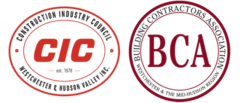Financial Management
A Keyway to Succeed at Succession is by Laying the Proper Groundwork
By PHILLIP ROSS, CPA, CGMA, PARTNER

For many construction firm owners, the right transition isn’t just about choosing the right exit strategy or succession plan, it’s about ensuring the business is in the strongest possible position before a transition even begins. That’s why this is one of the most difficult decisions of ownership and why the keyway to a successful transition is through preparation—be it an owner considering family succession, an internal buyout or ESOP (Employee Stock Ownership Plan), selling to private equity or merging or selling to another firm.
A company with strong current and future leadership, solid financial performance, a clear market niche and sound business practices will not only attract better succession opportunities, it will command higher valuations and ensure long-term stability.
Strong Leadership: The Backbone of Any Transition: A leadership team capable of running the business effectively, whether or not the current owner is involved, is one of the most critical elements of succession planning. Prospective buyers, investors, or next-generation leaders want to see a management team that understands both the operational and strategic aspects of the business. If key decision-making still rests solely with the owner, transitioning will be far more difficult. Owners should focus on leadership development early, mentoring key employees and providing structured opportunities for them to take on more responsibility.
A Profitable, Scalable Business: No matter the succession path, financial health is paramount. Construction firms with strong balance sheets, steady cash flow and profitability are more attractive to buyers, investors and even family successors. A history of consistent earnings and well-managed project pipelines signals a stable operation and a well-capitalized company is one that will have more options when it comes to succession planning.
Longstanding client relationships and a strong foothold in a niche are also important in maintaining profitability. Firms with specialized experience in specific industries, or a standout geographic spread across multiple regions, will generally perform better than their competitors and be more attractive to potential buyers.
Firms that have clear processes, controls and systems in place are more attractive candidates. Companies that do budgeting and projections and monitor them constantly tend to be more successful and better positioned for transition. Owners should proactively work with advisors to structure the business in a tax-efficient manner before a sale or transfer.
Competitive Differentiation Matters: It’s all about the niche. A construction company with a defined market position, whether based on geographic dominance, specialized expertise, or long-term client relationships, is far more attractive to buyers and investors. Firms that operate in highly competitive, low-margin sectors without a clear differentiator may struggle to generate interest or command premium valuations. Owners should assess whether their firm’s reputation and specialization provide a strong foundation for future success and are attractive to potential future owners.
A Well-Run Company Commands Higher Value: Beyond leadership and financials, the company’s operational efficiency plays a major role in succession planning. A well-structured business with documented processes, and risk management protocols are likely to thrive post-transition. As discussed above, strong financial oversight and monitoring are key. Owners should establish clear governance structures and decision-making frameworks and strengthen the internal controls for contractual and risk management practices.
Firms that have invested in technology and internal systems are generally more efficient and can improve long-term scalability. With all transition options, firms need to have a strong culture that fosters employee engagement and retention.
Planning and Preparation: The best succession plans are those that start early, years before an actual transition takes place. Engaging financial, legal and other advisors well in advance allows for thoughtful planning, putting the business in the best light possible and the time to carefully evaluate all the options. Owners who wait until they are ready to exit often find themselves with limited options, rushed decisions and lower valuations.
By focusing on leadership development, financial strength, competitive positioning, and operational efficiency, construction firm owners can expand their options, increase value and set the company up for future success. These options all have their respective advantages and challenges.
Many construction firms and contractors are family-owned businesses, making family succession a natural choice. For other companies, merging with another construction firm can provide synergies that benefit both parties, such as expanded geographic reach, access to new client bases and operational efficiencies. If maximizing value and ensuring a clean exit are top priorities, selling to another construction company—whether a competitor, a larger industry player or a strategic buyer—can be the best route.
Today, two additional options that are more prevalent than in previous years are private equity investment and ESOPs. Private equity firms are increasingly interested in construction businesses, particularly those with strong cash flow, niche expertise, or regional dominance. Meanwhile, ESOPs allow employees to acquire ownership through a trust, providing tax advantages to both the seller and the company. ESOPs can boost employee engagement and retention as workers become financially invested in the firm’s success.
The Bottom Line: A well-prepared business isn’t just easier to transition, it’s more valuable, more resilient and more likely to continue to be successful.
About the author: Phillip Ross, CPA, CGMA is an Accounting and Audit Partner and Chair of the Construction Industry Group at Anchin, Block & Anchin, LLP. For more construction industry thought leadership and content, log on to www.anchin.com.
Published: February 13, 2025.
